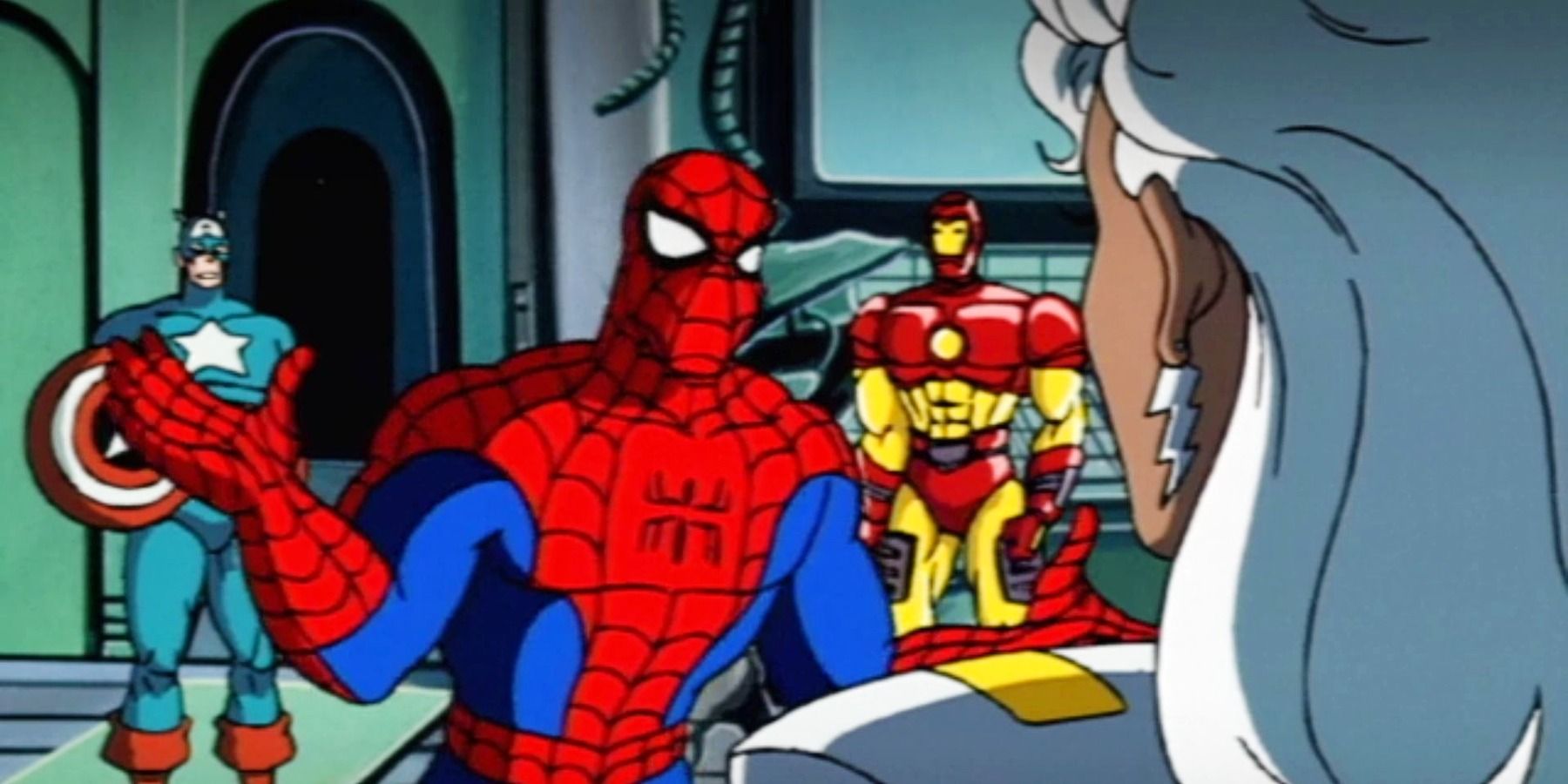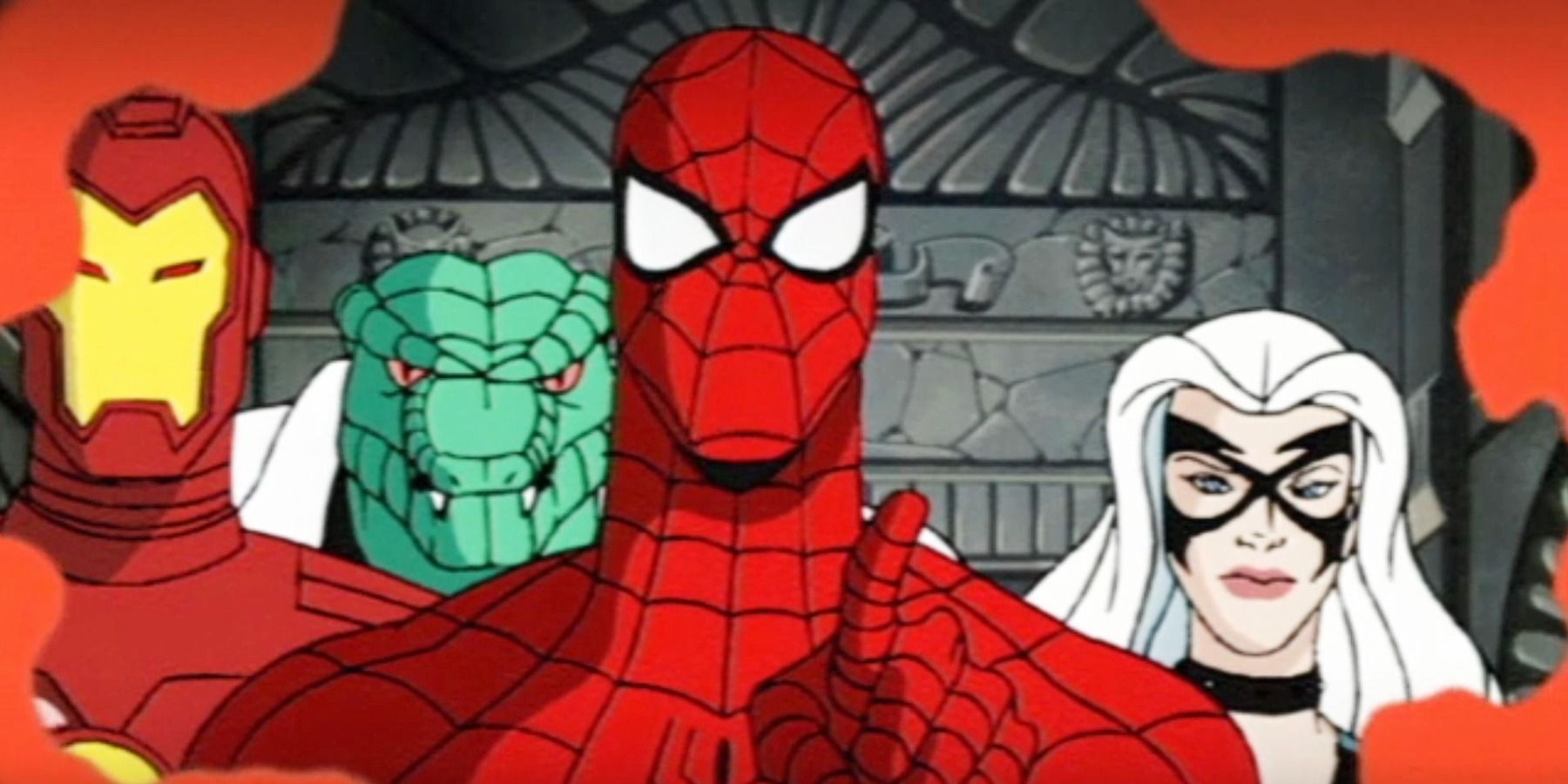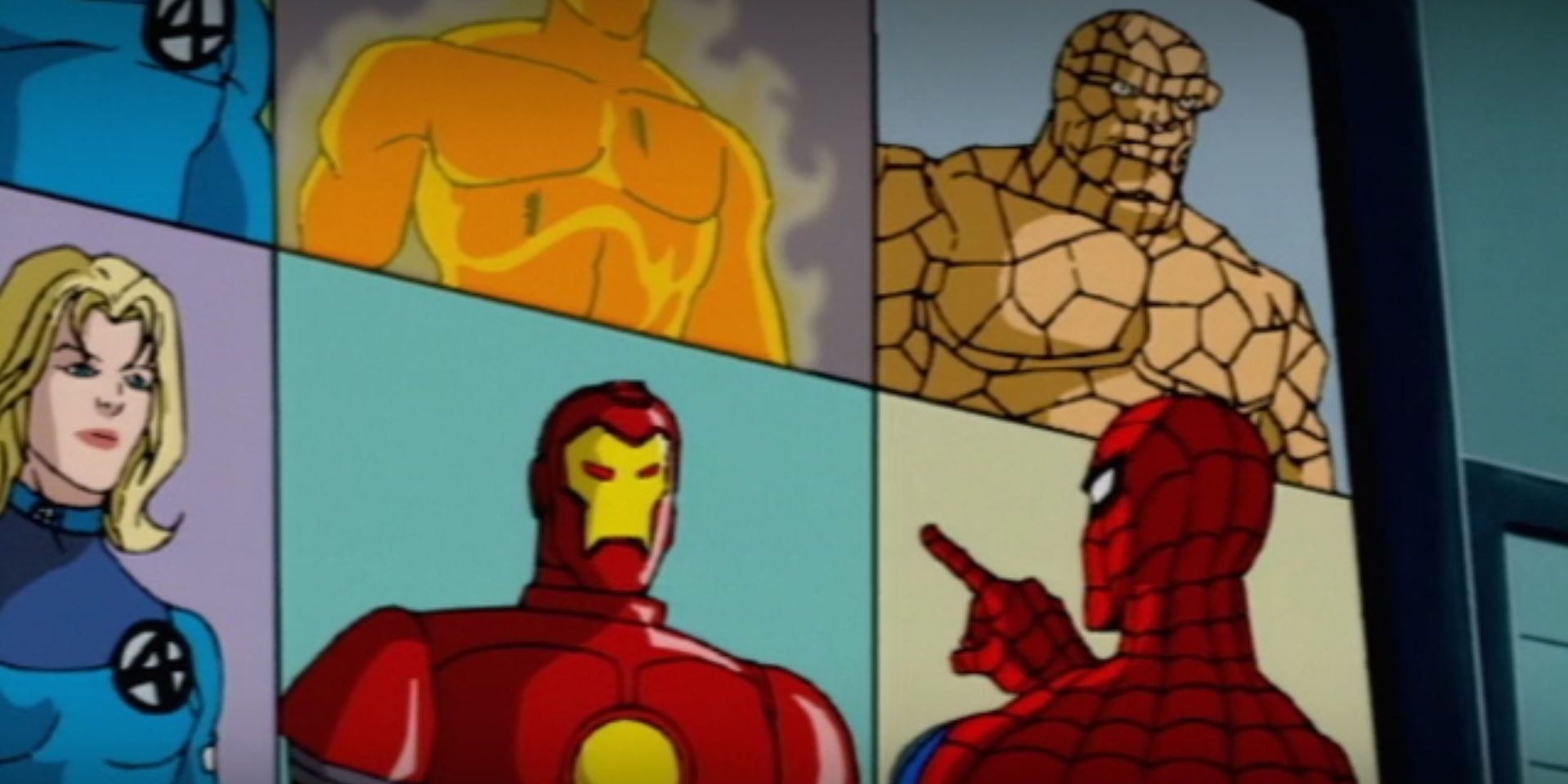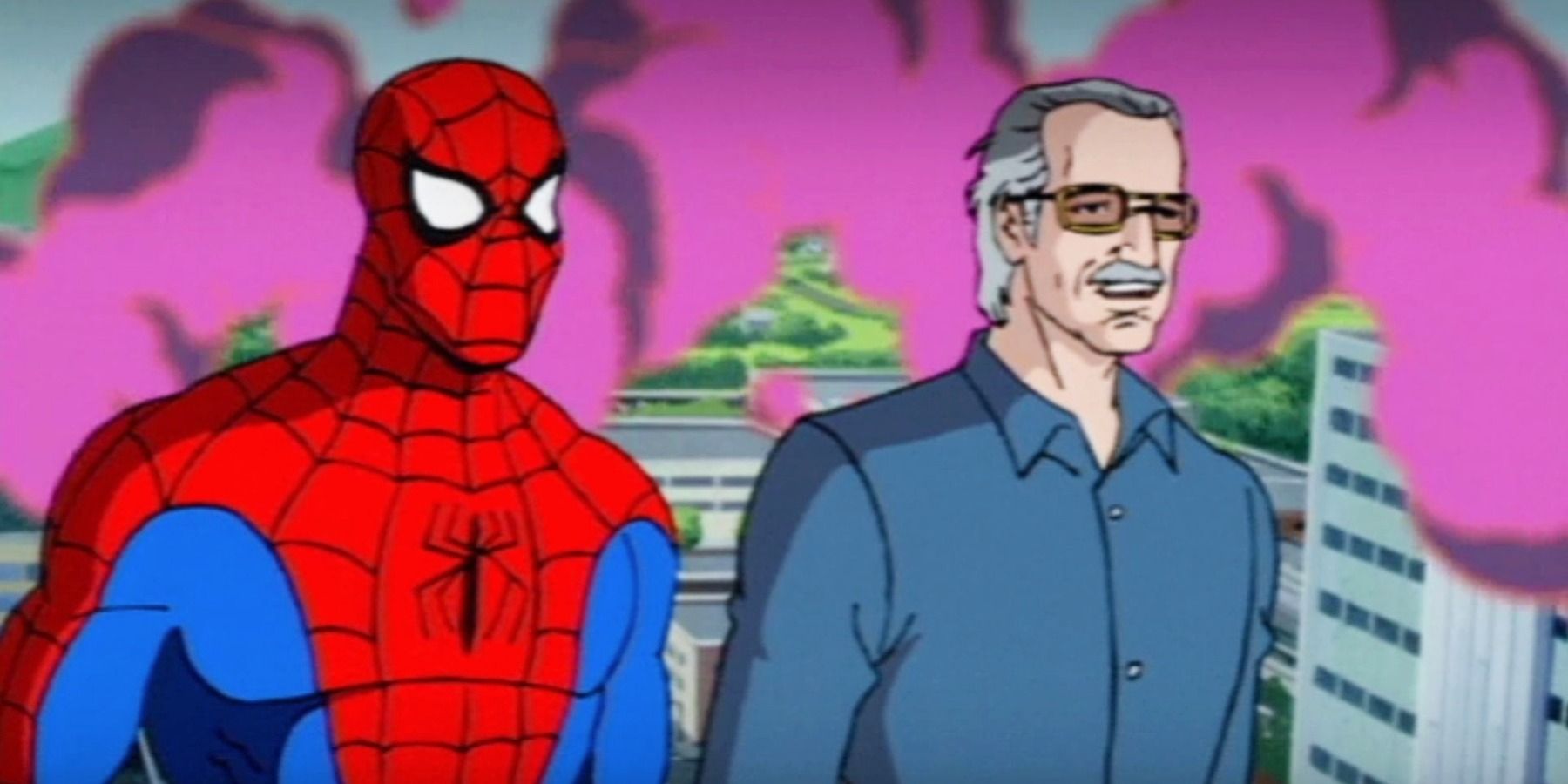The 90s were indeed far more simple times, just ask anyone that grew up watching Spider-Man: The Animated Series, or any of its X-Men, Iron Man, Fantastic Four, and The Incredible Hulk counterparts. While the MCU is only just getting to the point where Marvel’s many universes become intertwined, animation was the first frontier to depict those fabled comic book stories.
It’s safe to say not every Marvel production from back then stands the test of time, yet in the X-Men and Spider-Man’s case, their worth stems partly from the fact that they were the longest-running of those shows, and also because Marvel made sure Peter Parker got what he deserved. It’s no secret that Spider-Man is Marvel’s most recognized superhero, hence why his Saturday morning cartoon was the perfect vehicle for the type of epic crossovers that fans wait for years in today’s MCU.
No matter how fun and fascinating the Multiverse concept really is, after more than a decade’s worth of MCU films and new Disney Plus series, it’s obvious that it would have made little sense back in Phase One the same way the animated X-Men experiment couldn’t use it due to its already overwhelming number of characters. Thus, only after the X-Men had already paved the way, in 1994 Spider-Man became the center stage for superhero crossovers.
The first season of the Spider-Man animated series introduces most of his rogues’ gallery with the Lizard, Doctor Octopus, Mysterio, the Kingpin, and of course, Venom all making appearances; however, it’s funny how much like 2008’s Iron Man this first part ends with Nick Fury foreshadowing even greater things to come. The cinematic Sinister Six are still nothing more than Spider-Man: No Way Home rumors almost 20 years in the making, but animated Spidey took things to the next level by teaming up all the bad guys it had introduced rather quickly as part of a series of events that only keep on escalating.
Due to the show’s massive success, Spider-Man became the single international hub for all things Marvel, and that included his predecessor the X-Men as part of the formula. As of now, there’s no telling of how much hype the X-Men’s eventual crossover with the rest of the MCU would generate, nevertheless, back then the sight of Spider-Man seeking help from the X-Men must have induced wild levels of living room excitement, much in the same way Marvel crowds roar cheering inside movie theaters today.
Despite premiering even slightly before Spider-Man, both Iron Man and the Fantastic Four never really caught on with as much viewership, hence why the pair only lasted a couple of seasons, compared to Spidey’s five spread out across four years. It’s not like Tony Stark and Reed Richards were shorts of fantastic villains to fight, but due to Spider-Man’s own popularity, their animated legacy is often remembered by many more for their cameos alongside Parker rather than their solo adventures.
It’s precisely this long-lasting effect that allowed Spider-Man writers to sprinkle more and more special appearances in the series, whether it was Daredevil or Doctor Strange popping up, the show was never shorts of special guests, especially once the latter and Madame Web talked multiverse with Peter. Nevertheless, the Spider-Man series was so much more than an endless wave of promotional cameos, because to many people’s surprise it was and still is surprisingly good.
Granted, the production values in terms of animation, soundtrack, and in some cases, voice-overs don’t hold up that well to today's billion-dollar industry standards, yet overall, Spider-Man and X-Men are great watches on Disney Plus because their length lends itself to a storytelling style that is very comic book at its roots. Suffice to say, these shows are not just nostalgia trips for millennials, they age quite well because they contain stories that transcend any artistic medium.
What truly makes the animated Spider-Man and X-Men from the 90s relics is that watching them will remind the viewer that such a thing could not exist nowadays. Even accounting for Disney’s growing control over Marvel’s former intellectual properties, Sony will never let go of Spider-Man and, more crucially, these shows would hardly make good business in today’s streaming landscape.
All things considered, that’s the way it should be because the deeper immersion that comes with big blockbuster films gives these superheroes the type of possibilities that many kids dreamt of when watching Spider-Man. Disney Plus’ What If…? barely works because most of the stories have already been told, the show’s charm is putting a twist on something that’s already out there, meaning few would argue this would be the way to go to build any character from the ground up.
After Venom: Let There Be Carnage opened a pandora’s box of possibilities for Sony and Marvel, the future for cinematic Spider-Man is brighter than it ever has been before, yet somehow the road towards an all-out Secret Wars like the one seen in Spider-Man's epic final season looks very far away and is in all likeliness simply impossible. Cinematic is one-third of Marvel’s mega-successful formula and that comes with a few limitations.
When No Way Home premieres, with or without Tobey Maguire and Andrew Garfield, it’s possible that the film will evoke a sense of familiarity not felt in other MCU movies because, unlike in Avengers, the idea of a Multiverse with many Spider-Men has already been pulled off by Madame Web. Animated Spider-Man even did Stan Lee cameos long before they was cool but hey, at least the MCU will always have Thor and Hulk as firsts for bragging rights.




